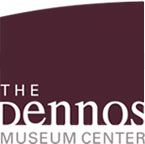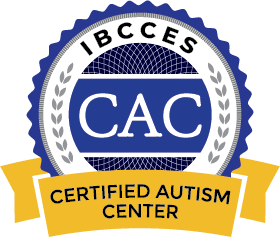
content standards addressed by k-12 programs
Dennos Museum Center K-12 educational programming aligns with Michigan Content Standards for Arts Education and the National Standards for Arts Education. We especially strive to provide experiences that will fit into a curriculum for the new Michigan Merit Curriculum for the Visual Performing and Applied Arts. To this end, experiences at the Dennos Museum Center highlight aspects of the creative process. In order to make sure that your tour addresses specific standards or content, please inform the docent when contacted of any special interests or needs.
Tours
Tours are interactive and give students an opportunity to analyze artwork, draw connections between the arts and their lives and make informed decisions about artwork. The following content standards are addressed:
Michigan Standards for the Visual Arts:
Elementary
Analyze: All students will analyze, describe, and evaluate works of art.
- Generalize about the effects of visual structures and functions and reflect upon these effects in personal work.
- Identify various purposed for creating works of visual art.
- Understand there are different responses to specific artworks.
- Describe and compare the characteristics of personal artwork.
- Understand how personal experiences can influence the development of artwork.
Arts in Context: All Students will understand, analyze, and describe the arts in their historical, social, and cultural contexts.
- Know that the visual arts have a history and specific relationships to various cultures.
- Identify specific works of art as belonging to particular cultures, times, and places.
- Demonstrate how history, culture and the visual arts can influence each other in making and studying works of art.
Connecting to other Arts, other Disciplines, and Life: All students will recognize, analyze, and describe connections among the arts; between the arts and other disciplines; between the arts and everyday life
- Explain how visual arts have inherent relationships to everyday life.
Middle School
Analyze: All students will analyze, describe, and evaluate works of art.
- Form and defend judgments about characteristics and structures to accomplice commercial, personal, communal, or other purposes of art.
- Observe and compare works of art that were created for different purposes.
- Describe how materials, techniques, technology, and processes cause responses.
- Describe and compare the characteristics of personal artwork to the artwork of others.
- Describe how personal experiences influence the development of specific artworks.
Arts in Context: All Students will understand, analyze, and describe the arts in their historical, social, and cultural contexts.
- Know and compare the characteristics of artworks in carious eras and culture.
- Describe and place a variety of art objects in historical and cultural contexts.
- Analyze, describe, and demonstrate how factors of time and place (such as climate, resources, ideas, and technology) influence visual characteristics that give meaning and value to a work of art.
Connecting to other Arts, other Disciplines, and Life: All students will recognize, analyze, and describe connections among the arts; between the arts and other disciplines; between the arts and everyday life
- Analyze personal, family, and community connections that involve work by visual artists.
High School
Analyze: All students will analyze, describe, and evaluate works of art.
- Analyze the effectiveness of selections in communicating ideas and reflect upon effectiveness of choices.
- Identify intentions of artists, explore the implications of various purposes, and justify analyses of purposes in particular works.
- Describe how expressive features and organizational principles cause responses.
- Reflect upon the characteristics and assess the merits of one's personal artwork.
- Reflect and analyze the personal experiences that influence the development of personal artwork.
Arts in Context: All Students will understand, analyze, and describe the arts in their historical, social, and cultural contexts.
- Reflect on how the subjects, ideas, and symbols or artworks differ visually, spatially, temporally, and functionally with respect to history and culture.
- Describe the functions and explore the meaning of specific art objects within carried cultures, times, and places.
- Analyze relationships of works of art to one another in terms of history, aesthetics, and culture, justifying conclusions made in the analysis and using conclusions to inform personal artwork.
Connecting to other Arts, other Disciplines, and Life: All students will recognize, analyze, and describe connections among the arts; between the arts and other disciplines; between the arts and everyday life.
- Speculate and analyze how future technologies may impact art in everyday life.
National Standards for Arts Education:
Visual Arts Grades K-4
- Content Standard: 4: Understanding the visual arts in relation to history and cultures
- Content Standard: 5: Reflecting upon and assessing the characteristics and merits of their work and the work of others
- Content Standard: 6: Making connections between visual arts and other disciplines
Visual Arts Grades 5-8
- Content Standard: 4: Understanding the visual arts in relation to history and cultures
- Content Standard: 5: Reflecting upon and assessing the characteristics and merits of their work and the work of others
- Content Standard: 6: Making connections between visual arts and other disciplines
Visual Arts Grades 9-12
- Content Standard: 4: Understanding the visual arts in relation to history and cultures
- Content Standard: 5: Reflecting upon and assessing the characteristics and merits of their work and the work of others
- Content Standard: 6: Making connections between visual arts and other disciplines
Tours with an Art Project
A tour in conjunction with an art projects gives student the opportunity to create a work of art that relates to the current exhibit, demonstrating their understanding of the themes addressed in the tour and mastery of tools, material, and techniques. In addition to the standards listed above, the following contents standards are also addressed:
Michigan Standards for the Visual Arts:
Elementary
Perform: All students will apply skills and knowledge to perform in the arts
- Use material, techniques, media, technology, and processes to communicate ideas and experiences.
- Use art materials and tools safely and responsibly.
- Use visual characteristics and organizational principles of art to communicate ideas.
Create: All students will apply skills and knowledge to create in the arts.
- Apply knowledge of materials, techniques and processes to create artwork.
- Apply knowledge of how visual characteristics and organizational principles communicate ideas.
- Explore and understand prospective subject matter, ideas, and symbols for works of art.
- Select and use subject matter symbols and ideas to communicate meaning.
Middle School
Perform: All students will apply skills and knowledge to perform in the arts
- Select materials, techniques, media technology, and processes to achieve desired effects.
- Use art materials and tools safely and responsibly to communicate experiences and ideas.
- Select and use the visual characteristics and organizational principles of art to communicate ideas.
Create: All students will apply skills and knowledge to create in the arts.
- Select knowledge of materials, techniques and processes to effectively communicate ideas.
- Employ organizational principles and analyze what makes them effective o not in the communication of ideas.
- Integrate visual, spatial, and temporal concepts with content to communicate intended meaning in artworks.
- Use subjects, themes, and symbols that communicate intended meaning in artworks.
High School
Perform: All students will apply skills and knowledge to perform in the arts
- Apply materials, techniques, media technology, and processes with sufficient skill, confidence, and sensitivity that personal intentions are carried out in artworks.
- Intentionally use art material and tools effectively to communicate ideas.
- Apply organizational principles and functions to solve specific visual arts problems.
Create:
- All students will apply skills and knowledge to create in the arts.
- Apply knowledge of materials, techniques and processes with sufficient skill, confidence, and sensitivity that personal intentions are carried out in artworks.
- Create artworks that use organizational principles and functions to solve specific visual problems.
- Describe the origins of specific images and ideas and explain why they are of value in their artwork and in the work of others.
- Apply and adapt subjects, symbols, and creative ideas in artworks and use the skills gained to solve problems in daily life.
National Standards for Arts Education:
Visual Arts Grades K-4
- Content Standard: 1: Understanding and applying media, techniques, and processes
- Content Standard: 2: Using knowledge of structures and functions
- Content Standard: 3: Choosing and evaluating a range of subject matter, symbols, and ideas
Visual Arts Grades 5-8
- Content Standard: 1: Understanding and applying media, techniques, and processes
- Content Standard: 2: Using knowledge of structures and functions
Visual Arts Grades 9-12
- Content Standard: 1: Understanding and applying media, techniques, and processes
- Content Standard: 2: Using knowledge of structures and functions
- Content Standard: 3: Choosing and evaluating a range of subject matter, symbols, and ideas
Educational Concerts and Workshops
Educational Concerts and Workshops vary by performer, but generally include short performance, interactive sections with singing, clapping or other activities, and some discussion of the genre of music or culture of the performers. The following content standards are usually addressed:
Michigan Standards for Music Education:
Elementary
Perform: All students will apply skills and knowledge to perform in the arts.
- Sing from memory and play a variety repertoire of music representing genres and styles from diverse cultures.
Analyze: All students will analyze, describe, and evaluate works of art.
- Identify simple music forms when presented aurally.
Arts in Context: All Students will understand, analyze, and describe the arts in their historical, social, and cultural contexts.
- Identify by genre or style aural examples of music from various historical periods and cultures.
- Describe how elements of music are used in examples from various cultures of the world.
- Identify and describe roles of musicians in various settings and cultures.
- Demonstrate audience behavior appropriate for the context and style of music performed.
Connecting to other Arts, other Disciplines, and Life: All students will recognize, analyze, and describe connections among the arts; between the arts and other disciplines; between the arts and everyday life.
- Identify various uses of music in their daily experiences and describe characteristics that make certain music suitable for each use.
-
-
- Sing and play music representing diverse genres and cultures, with expression appropriate for the work being performed.
- Describe specific music events in a given aural example, using appropriate terminology.
- Arts in Context: All Students will understand, analyze, and describe the arts in their historical, social, and cultural contexts.
- Describe distinguishing characteristics of representative music genres and styles from a variety of cultures.
- Compare, in several cultures of the world, functions music serves, roles of musicians, and conditions under which music is typically performed.
- Compare, in several cultures of the world, functions music serves, roles of musicians, and conditions under which music is typically performed.
- Demonstrate extensive knowledge and use of the technical vocabulary of music.
- Arts in Context: All Students will understand, analyze, and describe the arts in their historical, social, and cultural contexts.
- Classify by genre or style and by historical period or culture unfamiliar but representative aural examples of music and explain the reasoning behind their classifications.
- Identify various roles that musicians perform, cite representative individuals who have functioned in each role, and describe their activities and achievements.
- Compare characteristics of two or more arts within a particular historical period or style and cite examples from various cultures.
- Content Standard: 1: Singing, alone and with others, a varied repertoire of music
- Content Standard: 2: Performing on instruments, alone and with others, a varied repertoire of music
- Content Standard: 3: Improvising melodies, variations, and accompaniments
- Content Standard: 6: Listening to, analyzing, and describing music
- Content Standard: 7: Evaluating music and music performances
- Content Standard: 8: Understanding relationships between music, the other arts, and disciplines outside the arts
- Content Standard: 9: Understanding music in relation to history and culture
- Content Standard: 1: Singing, alone and with others, a varied repertoire of music
- Content Standard: 2: Performing on instruments, alone and with others, a varied repertoire of music
- Content Standard: 3: Improvising melodies, variations, and accompaniments
- Content Standard: 6: Listening to, analyzing, and describing music
- Content Standard: 7: Evaluating music and music performances
- Content Standard: 8: Understanding relationships between music, the other arts, and disciplines outside the arts
- Content Standard: 9: Understanding music in relation to history and culture
- Content Standard: 1: Singing, alone and with others, a varied repertoire of music
- Content Standard: 2: Performing on instruments, alone and with others, a varied repertoire of music
- Content Standard: 3: Improvising melodies, variations, and accompaniments
- Content Standard: 6: Listening to, analyzing, and describing music
- Content Standard: 7: Evaluating music and music performances
- Content Standard: 8: Understanding relationships between music, the other arts, and disciplines outside the arts
- Content Standard: 9: Understanding music in relation to history and culture
-
Middle School
Perform: All students will apply skills and knowledge to perform in the arts.
Analyze: All students will analyze, describe, and evaluate works of art.
Connecting to other Arts, other Disciplines, and Life: All students will recognize, analyze, and describe connections among the arts; between the arts and other disciplines; between the arts and everyday life.
High School
Analyze: All students will analyze, describe, and evaluate works of art.
Connecting to other Arts, other Disciplines, and Life: All students will recognize, analyze, and describe connections among the arts; between the arts and other disciplines; between the arts and everyday life
National Standards for Arts Education:
Music Grades K-4
Music Grades 5-8
Music Grades 9-12


